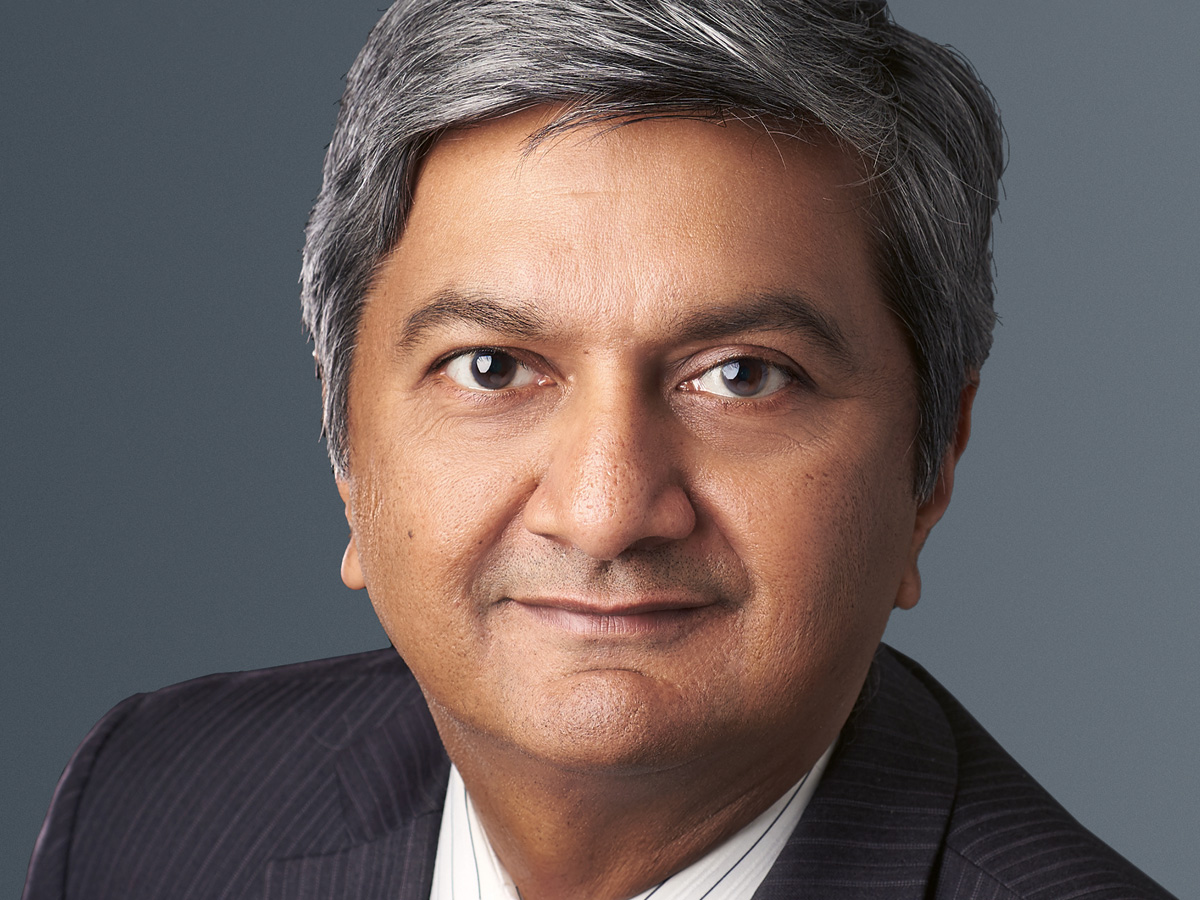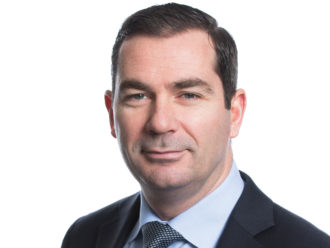Tell me about your roles on the advisory committee for the Virginia Retirement System’s defined contribution plan and the academic advisory board of PGGM, a Dutch pension investor for healthcare workers.
Fundamental to what I’m doing is being a student of retirement security. I was blessed to work on the World Bank’s pension plan in the 90s where we also advised predominantly poor countries about setting up a pension system.
The benefit of being globally active is that you realise what happens in the Netherlands is different from what happens in America. Unless you have a truly global perspective, you could make some bad decisions on behalf of your clients.
One the one hand, I’m constantly learning from these roles, but on the other, I’m telling the Dutch what the Americans are doing that is interesting and vice versa. It’s a bit like being a fly on the wall and hopefully both sides can benefit.
And PGGM manages defined benefit assets, right?
Yes, but they are in a transition to some form of defined contribution. This is what’s interesting about being involved with a Dutch pension fund: they are going through two major transitions, which affects the entire country, not just PGGM. One is that the old defined benefit (DB) contract will not be around for much longer, with people skirting around two variations of DC.
On the one hand is the American style of DC where you have your own account and we are just the administrators. On the other, is an approach that allows for some form of risk sharing.
The second major transition is incorporating ESG into their pension objective, which is very forward-thinking.
Do you mean Collective Defined Contribution (CDC)?
Yes, but the Dutch model has not quite locked in because there are many stakeholders and there is also the question of how people are treated in the transition process.
CDC is also being discussed in the UK, but I’m not convinced that it solves a lot of the problems we need to solve.
In terms of risk sharing?
Yes, because when you are in a collective agreement, someone inevitably benefits at the expense of another. For example, if you die young, you are subsidising the people who live longer. And typically, poorer segments of society tend to have a lower life expectancy, so you have poorer people subsidising the old, unintentionally of course.
Another challenge is that many central banks have caused pension schemes to become underfunded because of their low yield policies. In that case, the young are subsidising the old. In a collective agreement it is challenging to make sure no one is disadvantaged. Typically, the young are not at the table during these discussions.
In one of the books you wrote [A SMART Approach to Portfolio Management] you advocate a rules-based technique for asset liability management. What does that mean for an institutional investor like PGGM?
One of the nice things about working for the World Bank in the 90s is that we learnt from institutions with state-of-the-art practices. Shell UK was one of the first pension funds we visited because it was professionally run, but it was focussed on the asset side of things.
Whereas, when we went to the Netherlands, they were focussed on liabilities. The Dutch have always argued that liabilities are the starting point for a pension fund, so all investment decisions should be liability focused.
Ever since, I have had this hook with the Netherlands because that is the correct way to manage a pension fund. I transitioned from the World Bank’s pension fund to a large asset manager in 1999 and received an enormous increase in salary, though with no increase in intelligence.
But the asset manager had a rules-based approach. In 2000, when the global equity markets blew up in the tech bubble, a lightbulb popped up in my head: if pension funds could adopt the same practices that they expect from their external asset managers, which is often a rules-based process, they could have similar success. My mission, with my co-founder became: “let us teach pension funds to do this in-house”.
Coincidentally, one of the case studies in our book is Abn Amro’s pension fund, which applied a rules-based technique in 2008 and did extremely well because of this process. One of the things they did was to increase their liability hedge as risk came off the market. They executed that beautifully and did not suffer the challenges that 99% of funds experienced globally.
How is that approach different from liability-driven investing?
Liability-driven investing can be a naïve approach where you set a static liability hedge. You just define your liabilities and put 70% of your portfolio into the liability hedge. But this number is not static, it depends on how the fund is doing. If it is doing well, you don’t need to take a lot of risk, especially if your funding status is above a 100%.
Then you can go to a 100% hedge, which coincidentally is something that the Boots Pension Scheme did very well. At the time, people were going on about how brilliantly the stock market is doing but what Boots did was absolutely correct. Sometimes, being an innovator is no fun because everyone throws stones at you. But what John Ralfe did for Boots back in the late 1990s was brilliant.
The SMART model says that you should dynamically switch between risky assets and a liability hedge based on how well funded you are. If your funding status gets a lot worse, you shouldn’t be taking a lot of risk. But a lot of pension funds ended up taking more risk the worse off they got.
But Dutch pension funds also ran into trouble with their LDI hedges.
More so on the inflation hedging side. On the interest rate hedge, Dutch funds are now above 100% funded. I have always been a proponent of the argument that central banks were destroying retirement funds with low yields to prop up the stock market. This has made the price of retirement very high. Dutch pension funds were at the mercy of the markets, just like every other pension fund in the world.
Moving from DB to DC, your latest work, 50 States of Gray, addresses what you describe as the DC retirement crisis. What are you proposing?
I wrote a book on reforming social security with Professor Franco Modigliani, who is a Nobel Prize winner. We started writing the book in 1997 because we were concerned that the World Bank was telling poorer countries to privatise their social security systems.
We said that this is going to be a disaster because you are asking people to make decisions on how much to save and invest and they are not trained to make these decisions. This privatisation is only going to transfer wealth from poor people to rich asset managers.
Sadly, we were correct. Everything we warned about 25 years ago turned out to be true, but I take little solace in that.
I had given up on pension reforms but then I was approached by Kathleen Kennedy, the daughter of Bobby Kennedy, who was trying to focus on the segments of the population who are not covered by pension funds, which is also a big issue in the UK. In the US, 50% of people are not covered by a pension fund, so who is going to look after them?
She was trying to get state governors in America to implement a pension plan to provide these people with access to a safe retirement and she convinced me to get off my backside. This is how 50 States of Gray came about.
Did you get any responses from US policymakers?
At the time, a big part of the debate was if we should follow the Nest model, which has been successful in getting people into the UK’s auto-enrolment system. I had a lot of global examples in the book to show them what people have done and that there is no need to reinvent the wheel for certain aspects of it.
Nest has done a phenomenal job of centralising the system and professionalising management, good board oversight and bearing the costs of setting it all up. But what I found lacking was that Nest did not have a good decumulation strategy and tried to enforce annuities on people.
That got me thinking that there has to be a better way of solving the decumulation problem. That is how the Retirement Security Bond idea came about (originally called “SeLFIES”).
How is the DC side of the Virginia Retirement System (VRS) coping with volatile markets and uncertainty on rates?
I am just taking part in a retreat for VRS where we are talking about the fact that we have higher rates, assets are expensive and cracks are starting to show in the global economy. It is not only Sri Lanka that has been challenged; we now have Silicon Valley Bank and Credit Suisse.
More importantly, every pension fund and endowment across the globe has gone into private assets. They have one good feature from an accounting perspective – they don’t have to use mark-to-market. But the negative to that is the absence of transparency: you don’t know what risks you are taking.
We now have a similar problem to 2008 with private assets coming under stress and people not managing that risk effectively.
In the UK there is now a big push by the government to get DC funds to invest more in private assets.
I would think twice about that. DC is a completely different ballgame. If a DC plan wants to get private equity returns, they should just lever up on their equity portfolio. Private equity doesn’t give you mark-to-market values and they might claim the broader market is down 10% and that their fund is only down 3%.
If I were a smart DC investor, I would say: “Give me all my money back.” And when they mark it down, I would put my money back in.
But you can’t do that with assets that don’t price regularly if you allow people to borrow from their funds. That is going to create all sorts of incentive issues.
My personal opinion is that private assets don’t belong in DC funds.
Instead, you are campaigning for the introduction of a retirement security bond. Is it similar to TIPS or linkers?
In concept yes, but the idea is slightly different. Ordinarily, your auto-enrolment provider would send you a statement telling you what your savings pot is worth. But it doesn’t tell you what income you are going to have when you are 65.
You are left guessing and, in some cases, the total number might look large and people might end up spending it without realising that in retirement terms, it is very low.
The idea behind the retirement security bond is simple. It pays you nothing until you retire. At 65 it could pay you £10 a year for 20 years, which is the average life expectancy in the UK and is indexed to inflation.
If your goal in retirement is to have an income of £50,000, the only thing you have to do is divide 50,000 by 10. So your goal is to buy 5,000 of these bonds until you retire. That is it.
All you need is to answer two simple questions: your date of retirement and your target income at retirement. This allows you to plan carefully and successfully. Everything else – accumulation, compounding interest, inflation indexing – is embedded in the bond.
How is it different from an annuity?
It is like an annuity. The problem with an annuity is that you have to look at a 40-page contract with an insurance company and if you die early, your heirs don’t get the money. Whereas with this contract, your heirs get the money and they can either take the coupon or sell it. Additionally, you can sell this bond; and it is hard to cancel an annuity.
This is different from regular DC funds.
Exactly. You can also buy and sell these bonds if you change your date of retirement. This is zero cost, low risk because it is issued by the government and is extremely liquid.
What is the expected return?
It is market-based driven by interest rates. In Brazil, the initial coupon was real returns of 6.5% plus an inflation adjustment. The return will keep changing but the interest rate will be fixed.
Will this cut out consultants and insurers?
The bond doesn’t cover longevity risk, so there is a role for insurance companies to play in managing that. They can still do that but with this instrument they can hedge themselves a lot better.
In a UK context, could this be aimed at members who have been auto enrolled and would be part of their decumulation fund?
The beauty of this innovation is that you don’t have to be a member of an auto-enrolment provider. By buying the bond, you are buying a pension fund.
How has that worked out in Brazil?
I got supremely lucky because I was invited to speak at a conference on this topic in 2019 and the gentleman who had been tasked with improving private pensions, Paulo Valle, had also issued debt for the Brazilian government. We had a lovely lunch and a few months later they made phenomenal progress.
Brazil has a lot of people in the informal sector, and all it needed was an app to set this up and people were able to use it to secure their retirement.
In Brazil, they allow you to buy fractional shares of these bonds for as little as R$4 (63p) at a time. A taxi driver could put a bit of each fare straight into their pension. For me, the UK issuing something like this is a no brainer.
Could this be another way for the government to attract infrastructure investment, albeit underwritten by them?
Absolutely. Look at what these bonds do. The cashflows are not needed for another 20 years, which is what you need for infrastructure. The cashflows for the bonds are the exact mirror of what you need to fund infrastructure.
Our hope is that once the government starts to issue this, infrastructure companies can start issuing their own version with a credit spread, so you get paid a little bit more.
If the government wants the private sector to take this on and run with it, they should get the ball rolling.
Is this not more expensive for governments, especially with rates rising?
It is no different from any other bond. But what I would say to the government is, if a lot of your people retire poor because they are invested in the wrong assets, you are going to have to bail them out. That is an expensive proposition which they are purposefully not accounting for. So why not pre-empt the problem?
ARUN MURALIDHAR’S CV
2022 – Present
Member of advisory committee
Virginia Retirement Systems’ DC plan
2020 – Present
Member of academic advisory board
PGGM Investments
2007 – Present
Chair and chief investment officer
AlphaEngine Global Investment Solutions
2001 – Present
Chair and founder
Mcube Investment Technologies
2012 – 2022
Adjunct professor of finance
George Washington University
2015 – 2018
Academic scholar
Georgetown University
2001 – 2008
Managing director
FX Concepts (Hedge fund)
1999 – 2001
Managing director
JP Morgan
1992 – 1999
Manager, investment management dept
World Bank
1988 – 1989
Analyst
Asia Group





Comments